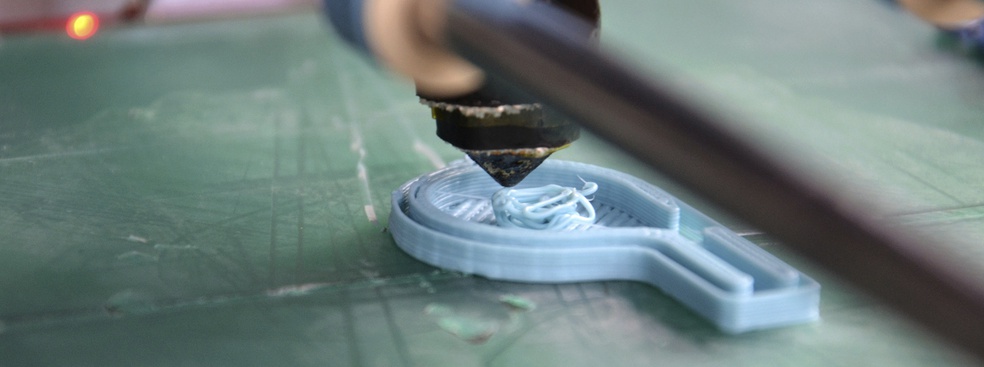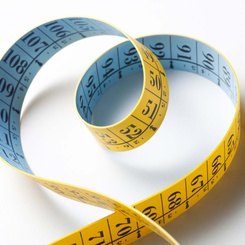A three-dimensional printer small enough, user-friendly enough – and affordable enough – to be used at home by anyone? Even a few years ago, many of us would not have dreamed it possible. Nevertheless, devices like the MakerBot are giving us the power to realize our heart’s desire. Today, you can print anything from a garden gnome to an assault rifle. While more complex projects remain in the industrial domain for the time being, three-dimensional printing is becoming accessible to an increasingly broad spectrum of the population.
“3D printing technology has existed for years, but a remarkable recent change is that it has entered the consciousness of the general public,” says Fabrice Cavarretta. “The media are talking a great deal about the 3D printable gun and about the Texas-Based Wiki Weapons Project of Cody Wilson, for example. There are signs that this technology is becoming part of the larger population’s vocabulary, which is already a good indications that scaling will not be a problem.”
Indeed, scaling – or the widespread dissemination of the technology – appears to be moving along smoothly. Cost has significantly contributed to this, with printers like the MakerBot being sold at a mere 1000 dollars. Recent studies put the market for 3D printers at $ 1.7 billion currently, and forecast this to rise to more than 3 billion by 2016.
But who is this type of 3D printer for? It must be said that the less expensive models are designed for specific materials: hence, different machines are required for different types of materials like plastic, glass or metal. You might think that this “complication” would put critical mass further out of reach. However, Professor Cavarretta argues that basic 3D printing has an ideal target buyer: the “hacker” entrepreneur.
“The scaling domino effect has started within the hacker community – and when I say hacker, I mean someone who wants to tinker with an object, modify it and make it better,” he explains. “These hackers have been the most willing to invest in MakerBots. And while only a handful of these ‘hackers’ have become successful entrepreneurs for the time being, I think that this is set to change, and rise sharply in the coming years.”
“In fact, I would go so far as to say that the 3D printer will revolutionize the way we think about entrepreneurship. This is because it’s making prototyping far more affordable, to the point where one can really bootstrap a product, develop and deploy it starting with only a few units, at a decently low cost.”
Before the 3D printer, creating a prototype was a daunting hurdle for an aspiring entrepreneur. Certain steps had to be taken to develop a product: they of course needed to make a prototype in order to sell their idea. Making this prototype was often very expensive, in particular if the technology required them to design and produce a die cast or a mold. Now, all of sudden, the first batch can be produced at a marginal cost, which implies that fund raising has been partly taken out of the equation, or at least greatly reduced.
“Entrepreneurs now have this unprecedented ability to extend the entrepreneurial boom that we witnessed around information technology and the internet in the last 15 years. They can bring into this equation the development of physical products. What we can expect to see is a continuum of this boom whereby it won’t be just about a website that anyone can produce in their garage but actual objects!” says professor Cavarretta.
“3D printing allows us to create the physical enclosure of objects, which can also contain other programmable hardware like robotics elements and some logic or programs. This is the missing link for an industrial revolution.”
Indeed, programmers have been having great ideas that have been thwarted by the question of ‘how do I get this into the real world’. As everyone already knows, programming had been made easy by tools that emerged during the internet revolution, like programming a website in PHP or programming a mobile app. Anyone has the power to create in this world.
What else does one need to create “interesting” objects, if we have the enclosure and the logic? The ‘activators’ who bring these two worlds together:
“It happens that we now have robotics environments like Arduino and Raspberry Pi offering cheap ways to bring programming ideas to life, have objects with camera, sensors, motors, you name it,” says professor Cavarretta. The overall equation will be: a smart object needs a physical enclosure and interfaces – which is where 3D printing comes in – along with the activators or sensors thanks to Raspberry PI or Arduino, in addition to a logic, using programming in PHP, Visual Basic and others. With these ingredients, the sky is the limit.”
So, what will the entrepreneurial model of tomorrow look like? Professor Cavarretta explains that already, the cost of prototyping is dramatically coming down to near zero. At the same time, crowd sourcing through potential customers is giving entrepreneurs new ways of raising money, thereby facilitating the bridge between minimal startup costs and getting full market pull.
“Crowd sourcing the funding for new projects through service like Kickstarter is letting potential customers provide small sums for support or even pay in advance for the upcoming object. This is revolutionizing the way we create new ventures,” he adds. “Consider for instance that on Kickstarter, a handful of Australians are developing the smart bulb of the future, LIFX, and that modern prototyping tools and Kickstarter are allowing them to challenge Philips who has a similar product called Hue. LIFX, for example, is the type of venture that would not have been possible 10 years ago. Not that the technology is new, but the entrepreneurial tools have improved tenfold.”
We’re ushering in a new entrepreneurial paradigm where, because prototyping has been made easier and less expensive, and because any entrepreneur and any idea can be financed through crowd sourcing, there will be a lot more opportunities to innovate. In the old paradigm, costly development and lengthy fund raising made entrepreneurship a dangerously speculative endeavor.
If anything is going to limit the growth of these developments, professor Cavarretta believes that regulation – specifically concerning copyright issues – will become a major obstacle. Already, regulating the 3D printed gun is the talk of town, but the bigger and more important question will occur as people try to repair and modify objects around them. Copyright issues will arise and companies will be asking whether one is ‘allowed’ produce such ‘reproduction’ or ‘modifications’.
“If you can print and replace a broken component to a purchased object, for example, the original manufacturer of the object is sure to come along and argue his loss of revenue on the repair. But, beyond that, cheaply printed parts to a car, for example, could pose a health and safety risk for populations. Would this be an area where the government will feel inclined to come in and regulate, hence preventing the taking off of these practices?” asks professor Cavarretta.
If they do move in to regulate, it will not be easy. Even before 3D printed gun data was removed by order of the Department of Defense, it had been downloaded some 100,000 times. And producing firearms without a license is already illegal. And law enforcement challenges will arise as soon as protected designs are distributed online and produced and reproduced in basements and workshops around the world. As we enter into what professor Cavarretta calls a new industrial revolution, 3D printing will open a Pandora’s box of regulation issues. In some ways, the rapid growth in popularity of downloading centers for MP3s and copyrighted video files foreshadows the future: more than 10 years on and production companies, record labels and governments are still struggling to effectively regulate. 3D printers will certainly herald a new struggle of this kind.









